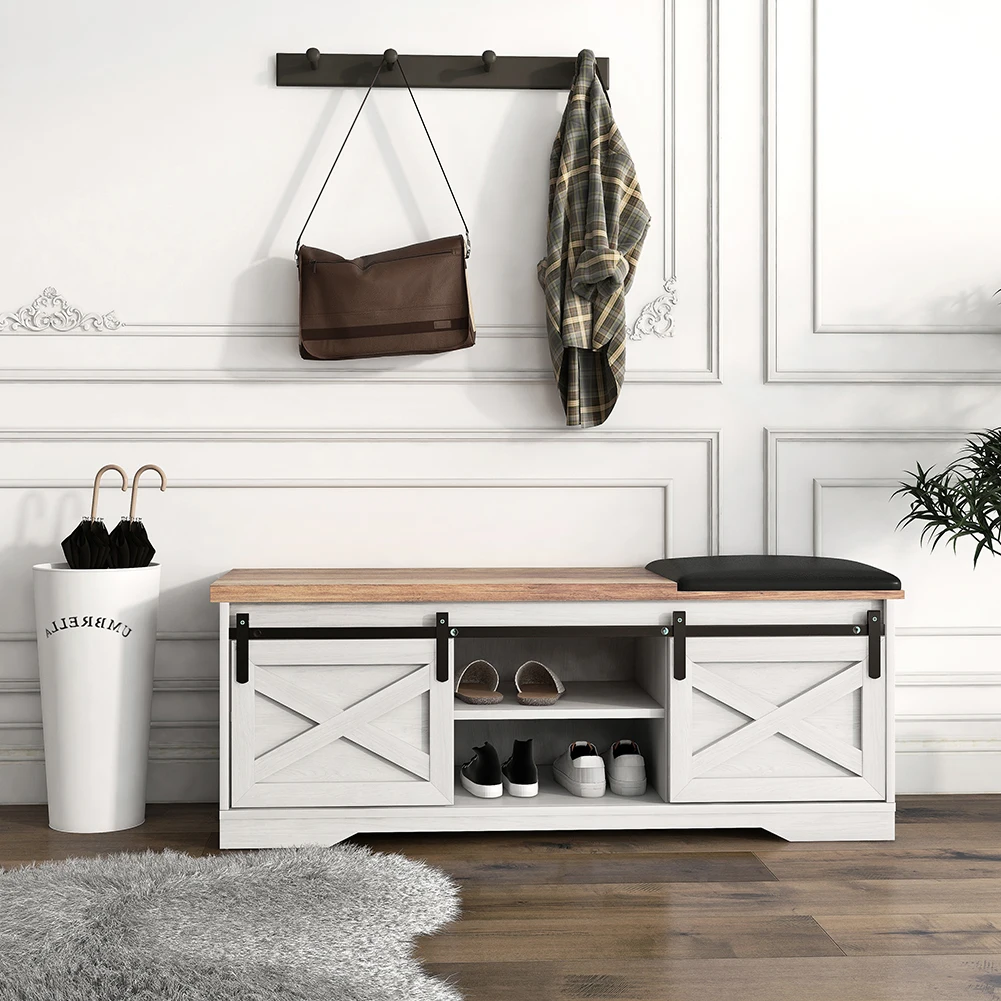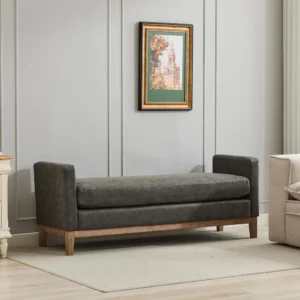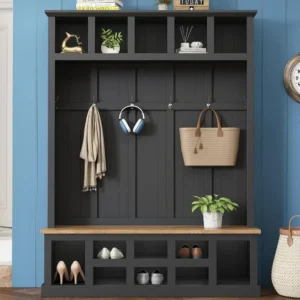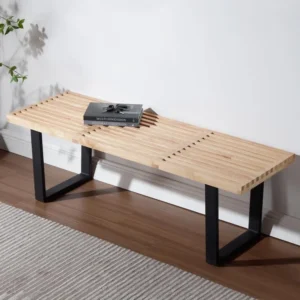Introduction: The Modern Bench Solution for Small Spaces
Living in a compact home or apartment presents unique challenges when it comes to furnishing your space. Every square foot counts, and finding pieces that work hard without overwhelming your rooms is essential. This is where modern benches shine as versatile heroes for small spaces.
Modern benches offer the perfect blend of form and function, delivering seating, storage, and style in one space-efficient package. Unlike bulkier furniture options that dominate limited square footage, a well-chosen bench can actually make your space feel larger while serving multiple purposes throughout your home.
These versatile pieces have evolved far beyond their traditional roles. Today’s modern bench solutions for small spaces come in countless designs that combine clean aesthetics with practical features like hidden storage compartments, multi-functional capabilities, and compact footprints.
As urban living spaces continue to shrink and the tiny home movement grows, furniture designers have responded with increasingly clever bench designs. The best part? These space-saving wonders don’t sacrifice style for functionality—they deliver both in abundance.
Throughout this guide, we’ll explore how benches designed for tight spaces can transform various rooms in your home, examine different design styles that work well in compact environments, and provide practical advice for selecting the perfect bench for your unique needs.
Why Modern Benches Are Perfect for Small Spaces
When space is at a premium, every furniture choice matters significantly. Modern benches offer several distinct advantages that make them ideal solutions for small-space living:
Space-Efficient Footprint
Benches typically have a much smaller footprint than alternatives like armchairs or love seats. A dining area that might fit only four chairs could potentially accommodate six people with bench seating on one or both sides of the table. This efficient use of space is invaluable in compact homes.
Multi-Functional Versatility
Perhaps the greatest advantage of space-efficient bench designs is their ability to serve multiple purposes simultaneously. A single bench can provide:
– Primary seating for everyday use
– Extra seating for guests when entertaining
– Hidden storage for items like shoes, blankets, or seasonal decor
– A display surface for decorative objects or practical items
– A place to put on shoes in an entryway
Visual Spaciousness
Modern benches often feature clean lines and elevated designs that create visual breathing room. Many styles sit on legs rather than directly on the floor, allowing light to flow underneath and creating the perception of more space. This “floating” effect helps small rooms feel less crowded.
Adaptable Placement
Unlike many furniture pieces that can only work in specific spots, benches can easily move around your home as needed. The same bench might serve as extra seating during a dinner party, then return to its place in the entryway or bedroom afterward.
Storage Solutions
Many storage benches that maximize utility feature clever compartments that transform otherwise wasted space into valuable storage. From lift-top designs to drawer systems, these hidden storage options help combat clutter—the arch-enemy of small spaces.
Proportion and Scale
Modern benches typically hit the sweet spot of proper scale for small spaces. Their low profile doesn’t obstruct sightlines or compete with other furniture pieces, allowing for more harmonious room compositions.
As we explore specific applications and styles throughout this article, these core benefits will become even more apparent. A thoughtfully selected bench doesn’t just solve space problems—it enhances your daily living experience in tangible ways.
Strategic Placement: Modern Benches by Room
The Entryway Organizer
The entryway sets the tone for your entire home while often being the most challenging small space to furnish effectively. A well-chosen bench transforms this high-traffic area into an organized welcome zone.
Sleek benches for modern entryways provide a dedicated landing spot for daily coming and going routines. In spaces as narrow as 3-4 feet wide, a slim bench creates an instant drop zone without obstructing movement.
The key advantages for entryways include:
- Creating a designated place to sit while putting on or removing shoes
- Providing a landing spot for bags, mail, and daily essentials
- Establishing visual structure in an otherwise transitional space
- Offering storage for items that might otherwise clutter your entrance
For extremely narrow hallways, look for benches with depths of 12-14 inches that hug the wall while still providing functionality. Many entryway bench options with shoe storage feature compartments specifically designed to keep footwear organized yet accessible.
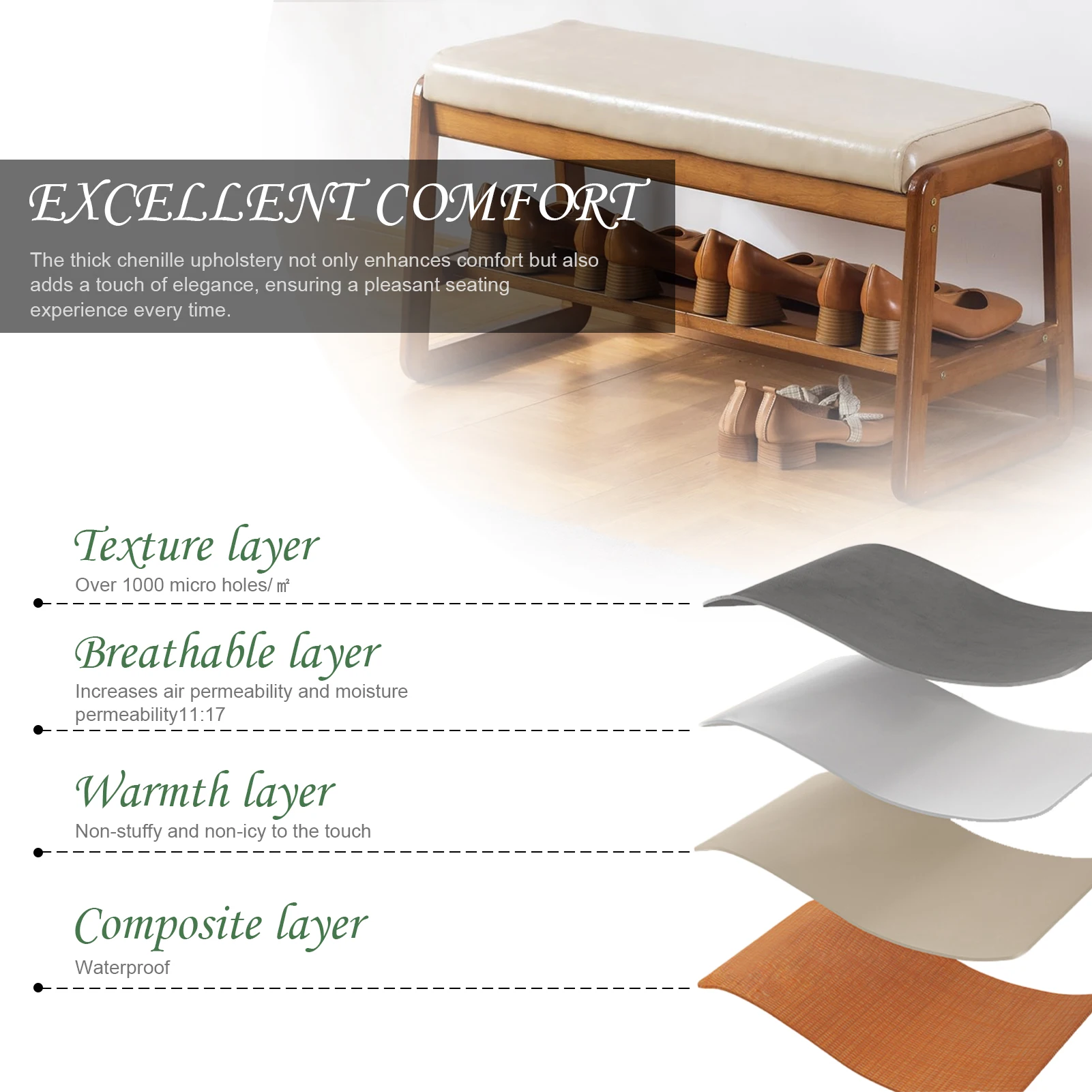
The Living Room Multi-Tasker
In small living rooms, every piece must earn its place. Modern benches excel here by providing flexible seating without the bulk of additional armchairs or ottomans.
Consider placing a bench:
– Along a wall as supplementary seating that can be pulled into conversation areas when needed
– In front of a sofa as a coffee table alternative that doubles as seating
– Under windows to create a cozy reading nook while maximizing otherwise awkward space
– As an end-of-sofa table that provides both surface area and extra seating
Storage bench solutions for compact living rooms are particularly valuable, offering hidden storage for throw blankets, magazines, remotes, and gaming equipment—items that typically create visual clutter.
For open-concept apartments or studios, benches can help define separate functional areas without using walls, creating visual boundaries while maintaining an open feel.
The Bedroom Space-Saver
Bedrooms often suffer from limited square footage, yet need to accommodate numerous functions. A strategically placed bench adds both practicality and polish to these intimate spaces.
The foot of the bed is the classic placement, where a bench:
– Provides a spot to sit while dressing or putting on shoes
– Creates a surface for folding clothes or setting out tomorrow’s outfit
– Adds visual anchoring to the bed without extending far into the room
– Offers hidden storage for extra bedding, off-season clothing, or shoes
For very small bedrooms, consider slim benches with heights that allow them to double as nightstands, or wall-mounted designs that fold down only when needed.
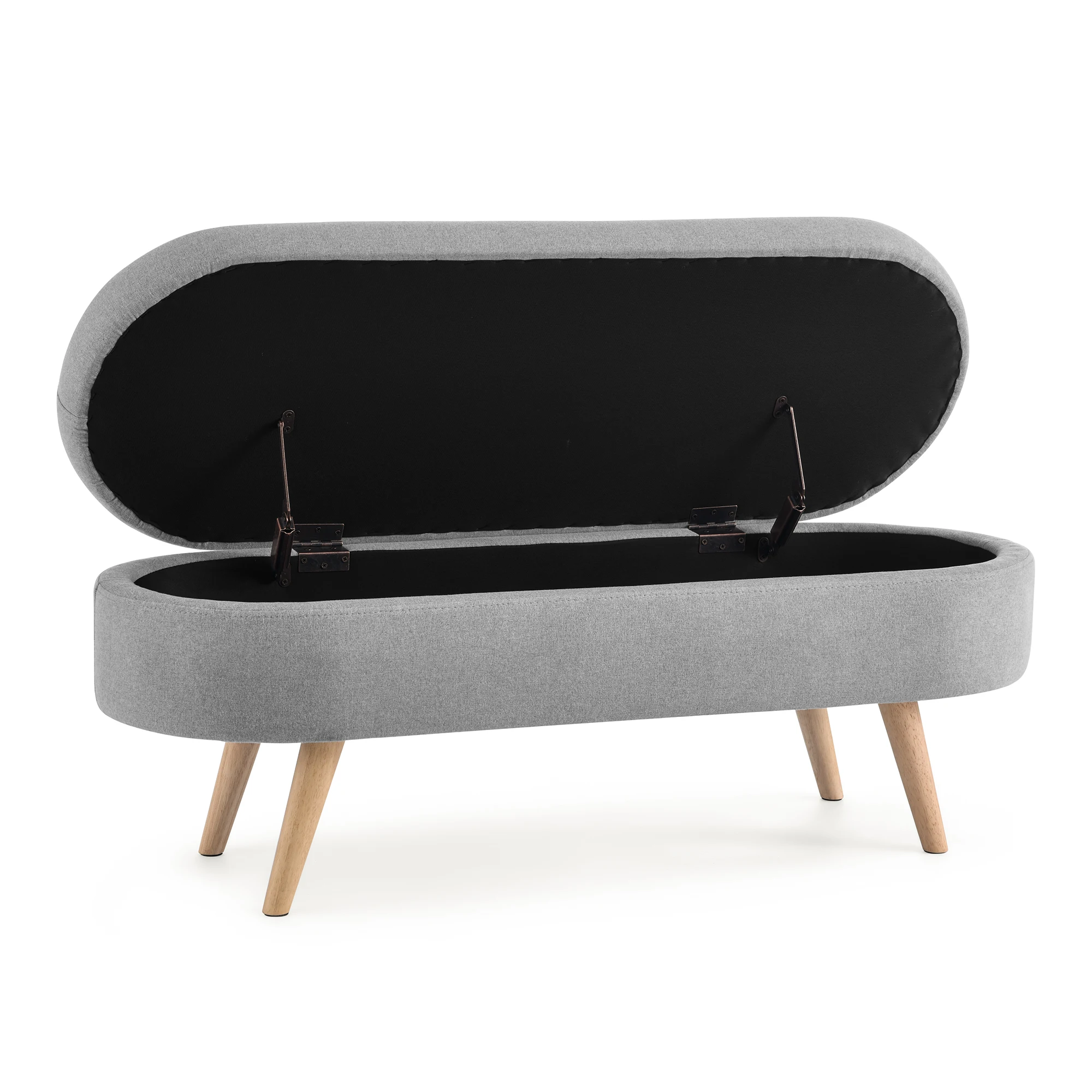
The Dining Area Maximizer
Small dining areas benefit tremendously from bench seating, which can increase seating capacity while reducing the visual and physical footprint of your dining setup.
The space-saving advantage is clear: while chairs need clearance to pull in and out (requiring at least 36 inches from table to wall), benches can be tucked completely under many table styles when not in use. This allows for comfortable dining in spaces that might otherwise feel too cramped.
Minimalist bench designs for dining areas work particularly well when:
– Placed against a wall to maximize open floor space
– Used on just one side of a table (paired with chairs on the other side)
– Selected in styles that complement your existing table
The flexibility of bench seating also allows you to squeeze in extra guests when entertaining—something fixed dining chairs can’t easily accommodate.
The Outdoor Retreat Creator
Even the smallest outdoor spaces can become functional retreats with the right bench. Balconies, tiny patios, and postage-stamp gardens all benefit from the compact efficiency of bench seating.
For these outdoor applications, look for:
– Weather-resistant materials like teak, metal, or specialized outdoor composites
– Foldable or stackable designs that can be stored during harsh weather
– Multi-functional options that incorporate planters or hidden storage
– Bench-table combinations that provide both seating and surface area
Wall-mounted folding benches are particularly valuable for balconies where every inch counts, offering seating that disappears when not needed.
Functional Features for Maximum Utility
Storage Powerhouses: Hidden Organization
The storage capabilities of modern benches can dramatically increase their value in small spaces. Different storage configurations offer unique benefits depending on your needs.
Lift-Top Storage Benches
These designs feature hinged tops that reveal generous storage compartments—perfect for bulky items like throw blankets, board games, or off-season clothing. The entire seat lifts to access a large, unobstructed storage area, maximizing the storage-to-footprint ratio.
Drawer-Equipped Options
Drawer storage options for enhanced organization offer more structured storage with the convenience of pull-out access. Unlike lift-tops that require clearing the entire surface to access stored items, drawers allow you to retrieve specific items without disturbing what’s on top. Look for:
– Full-extension drawer glides for easy access to the back
– Dividers or organizers for smaller items
– Soft-close mechanisms for quiet operation
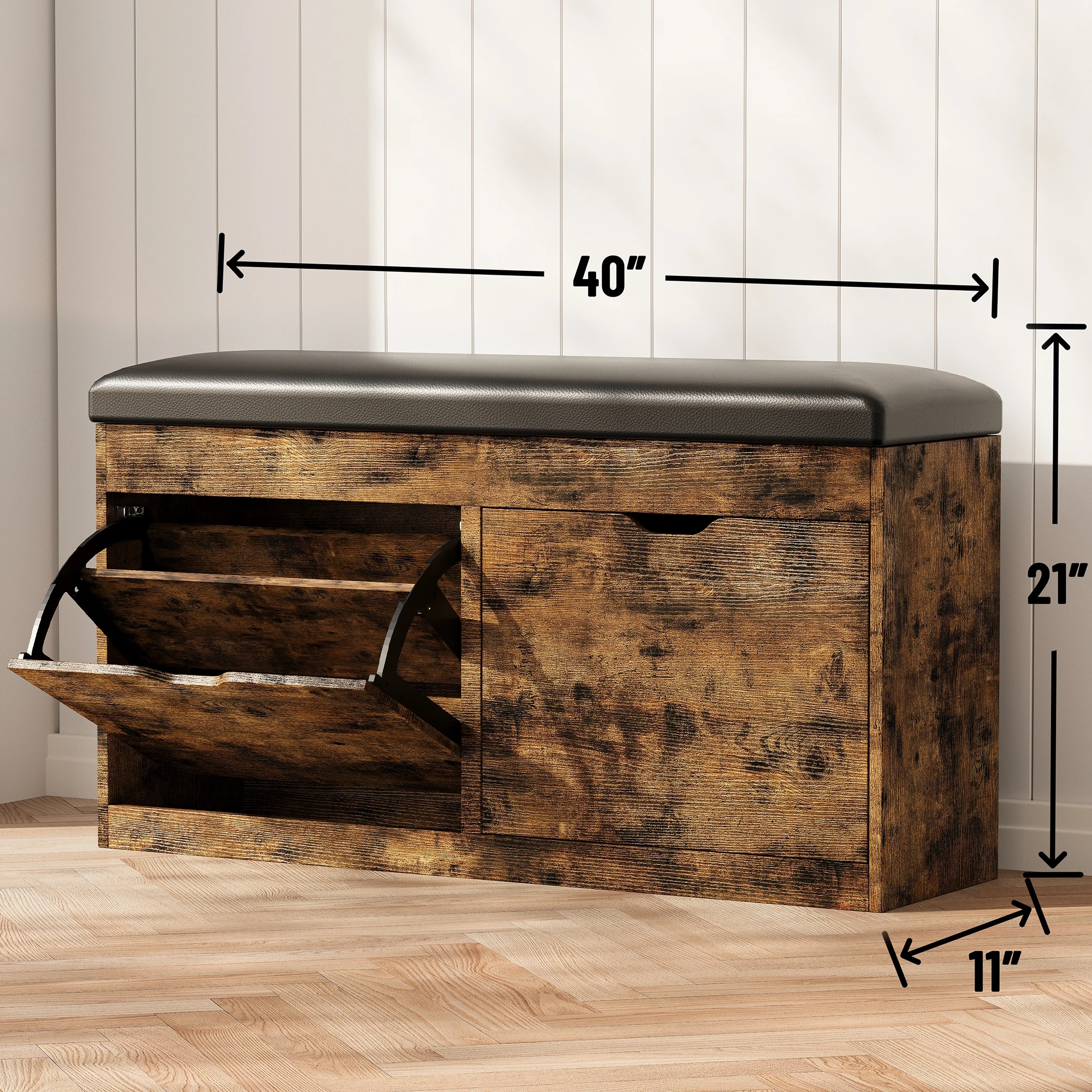
Open-Shelf Configurations
For items you want visible and accessible, open-shelf benches provide organized storage without hiding everything away. These work beautifully for:
– Shoe storage in entryways
– Book display in living spaces
– Basket storage for smaller items
– Decorative display in any room
Specialized Compartments
Some benches feature custom storage designed for specific needs, such as:
– Cubbies sized perfectly for shoes
– Vertical dividers for bags, magazines, or vinyl records
– Charging stations integrated for electronics
– Specialized hooks or hanging systems
When selecting a storage bench, consider both the volume and accessibility of the storage. The most spacious compartment won’t be helpful if accessing it is cumbersome in your specific space.
Multi-Functional Designs: Two-in-One Solutions
The ultimate small space heroes are benches that transcend a single function, effectively replacing multiple furniture pieces.
Bench-Table Hybrids
These clever designs transform between seating and surface functions. Some feature sections that raise to coffee table height, while others include fold-out or pull-up surfaces for impromptu workspaces or dining.
Bench-Bookcase Combinations
Perfect for book lovers, these designs incorporate shelving within or alongside seating. Creative ways to use multi-functional benches include creating miniature reading nooks that don’t require the space of a full-sized armchair and bookshelf combination.
Bench-Desk Arrangements
For small home offices or study areas, bench-desk combinations provide seating that tucks away when not in use. Some models feature writing surfaces that fold down from wall-mounted benches, creating instant workspace that disappears when the workday ends.
Nested Designs
These multi-functional bench designs for apartments include smaller ottomans or stools that nest underneath larger bench surfaces, pulling out only when additional seating is needed. This Russian-doll approach maximizes functionality while minimizing footprint.
When evaluating multi-functional options, consider the ease of transformation between functions. The best designs allow quick, intuitive changes without complicated mechanisms that might fail over time.
Space-Saving Specialists: Foldable & Stackable Options
For the ultimate in space efficiency, consider benches designed to disappear when not in use.
Collapsible Designs
Folding benches compress to a fraction of their functional size for easy storage. These work well for:
– Occasional extra seating for entertaining
– Seasonal outdoor use
– Homes with truly minimal square footage
Stackable Sets
Some bench designs are created specifically to stack together, allowing you to use only what you need while storing the rest in a compact tower. These are ideal for small homes that occasionally host larger gatherings.
Wall-Mounted Fold-Downs
Similar to Murphy beds in concept, these benches attach to the wall and fold flat when not in use. In extremely tight spaces like tiny apartment hallways, these can provide essential function without permanently consuming floor space.
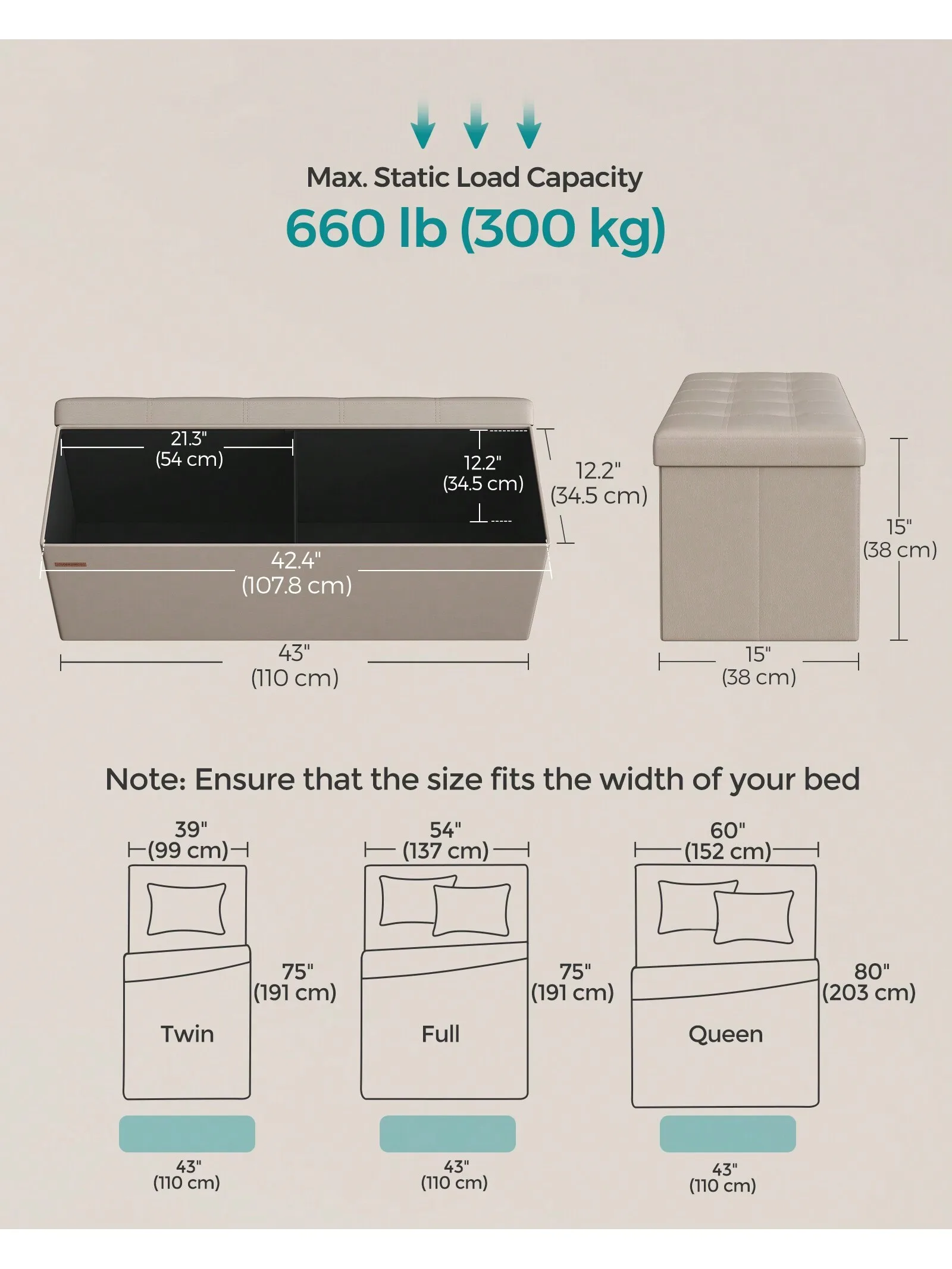
Compact bench solutions for tight spaces like these require considering not just their in-use footprint, but also their storage requirements and the ease of converting between states. The best options deploy quickly and store easily without complicated procedures.
Modern Bench Aesthetics for Small Spaces
Minimalist Modern: Clean & Simple
Minimalist bench designs are characterized by their stripped-down simplicity—focusing on pure function with clean lines and unadorned surfaces. This aesthetic isn’t merely stylistic; it serves a practical purpose in small spaces by reducing visual weight.
Key characteristics include:
– Straight lines or subtle, simple curves
– Limited ornamentation or decorative details
– Neutral color palettes (whites, grays, blacks, natural wood tones)
– Emphasis on negative space and visual lightness
– High-quality materials that need no embellishment
Styling minimalist benches in small entryways works best when you maintain breathing room around the piece. Avoid the temptation to fill every surface—the power of minimalist design comes from its restraint.
Minimalist benches excel in spaces where visual calm is a priority, like bedrooms and meditation areas. They also work well in busy family zones where their simplicity provides a counterbalance to the inevitable activity and objects.
Scandinavian Modern: Light & Functional
Scandinavian design brings warmth to minimalism through its focus on natural materials and subtle organic elements. These benches create an airy, inviting feel that’s particularly valuable in small spaces.
Defining features include:
– Light-colored woods (birch, ash, pine)
– Gentle organic curves combined with straight lines
– Natural textiles like wool, linen, and cotton
– Functional details that enhance usability
– A focus on craftsmanship and lasting quality
Scandinavian bench designs often incorporate thoughtful details like slightly angled backrests for comfort or subtle rounded edges that make them more friendly in tight passages. The characteristic light wood tones reflect more light, helping smaller spaces feel brighter and more open.
These benches pair beautifully with textiles—think sheepskin throws or woven cushions—adding warmth and texture without requiring additional furniture pieces.
Industrial Modern: Urban & Compact
Industrial style benches bring urban edge and robust construction to small spaces, often with surprisingly lightweight visual profiles despite their sturdy builds.
Distinctive elements include:
– Metal frameworks (often black or raw steel)
– Reclaimed or distressed wood components
– Visible hardware and mechanical details
– Mixed material compositions
– Utilitarian features adapted for home use
The open framing common in slim-profile industrial bench options creates valuable see-through quality that helps small spaces feel less crowded. Even substantial industrial pieces often appear lighter than their solid-construction counterparts because of this transparency.
Industrial benches excel in high-traffic areas like entryways and dining spaces where their durability withstands daily use while their urban aesthetic adds character to basic spaces.
Mid-Century Modern: Retro Space-Savers
Mid-century modern designs offer small-space dwellers a perfect combination of style and function, with their characteristically elevated forms and organic-meets-geometric sensibility.
Signature features include:
– Tapered, angled legs that create space underneath
– Warm wood tones (particularly walnut and teak)
– Organic shapes that remain compact and efficient
– Strategic padding that doesn’t overwhelm the silhouette
– Clever storage integrated into sleek forms
The elevated stance of most mid-century benches is particularly beneficial in small rooms, where the visible floor space beneath the furniture helps the room feel more spacious. Their typically modest scale was designed for the smaller post-war homes—making them naturally suited to today’s compact living situations.
Mid-century bench styles make excellent focal points, adding a touch of design history and character without requiring the space that larger statement pieces would demand.
Material Considerations for Small Space Benches
Natural Woods: Warmth & Character
Wood remains a perennial favorite for bench construction, bringing natural warmth and character to small spaces. The right wood bench can anchor a room while maintaining an appropriate scale.
Popular wood options include:
– Oak: Durable and distinctive with visible grain patterns; available in both light (white oak) and medium (red oak) tones
– Walnut: Rich, chocolate-brown tones that add sophistication; naturally resistant to warping
– Ash: Light colored with excellent strength-to-weight ratio; appears less heavy than denser woods
– Mango: Sustainable option with interesting grain patterns and good durability at lower price points
Wooden bench options for small spaces should be considered not just for their appearance but also their weight. In small spaces where furniture might need to be moved frequently, lighter woods like pine and ash offer practical advantages over denser options like oak and walnut.
Finish choices significantly impact how wood benches affect your space perception:
– Lighter finishes reflect more light and make spaces feel larger
– Darker finishes add drama but can make a space feel smaller
– Natural, clear finishes highlight the wood’s character without adding visual weight
– Painted finishes can coordinate precisely with your color scheme
Metal & Mixed Materials: Visually Light Solutions
Metal-framed benches offer exceptional strength with minimal visual bulk—a winning combination for small spaces. Their structural efficiency allows for slimmer profiles without sacrificing stability.
Common metal frame options include:
– Steel: Maximum strength and durability, typically powder-coated for protection
– Aluminum: Lighter weight with good strength and natural corrosion resistance
– Iron: Traditional material with substantial feel, often used in decorative elements
– Brass/Copper: Adds warm metallic accents, typically as decorative elements rather than main structure
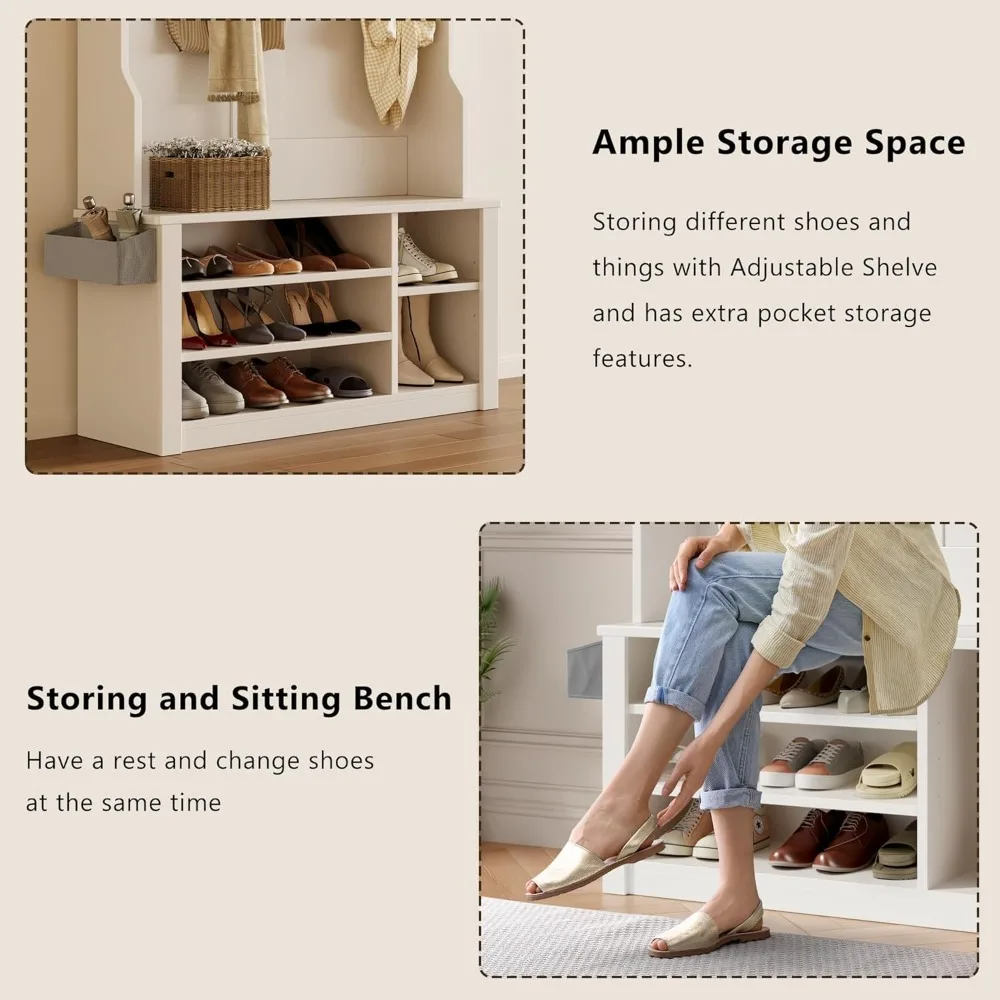
The visual lightness of metal-framed benches for compact entryways comes from their open construction. Unlike solid wood bases that extend to the floor, metal frames often feature slender legs and open designs that allow light and air to flow through, reducing their visual impact.
Mixed material benches combine the warmth of wood or upholstery with the structural efficiency of metal frames. This marriage of materials creates pieces that feel substantial without overwhelming small spaces.
Upholstered Options: Comfort & Color
Upholstered benches add comfort and textile interest to small spaces, softening the overall feel while providing more comfortable seating for longer periods.
For small spaces, consider these upholstery approaches:
– Partial upholstery: Just the seat cushion, maintaining visual lightness elsewhere
– Textural solids: Adding interest through texture rather than busy patterns
– Strategic pattern use: Small-scale or geometric patterns that don’t overwhelm
– Performance fabrics: Stain-resistant options that stand up to higher use in small spaces
Cushioned bench options for comfort don’t need to be bulky—look for thinner profiles with high-density foam that provides comfort without excessive padding that consumes valuable inches.
Color selection for upholstered benches in small spaces deserves careful consideration:
– Light colors increase the sense of space but show wear more quickly
– Dark colors can ground a space but may visually shrink it
– Colors that blend with your wall color create a seamless look that expands the space
– Bold colors can create focal points but should be used strategically in limited spaces
Innovative Materials: Modern Solutions
Contemporary bench designs increasingly incorporate innovative materials that solve specific small-space challenges.
Acrylic and Lucite
These transparent materials create “ghost” furniture that occupies physical space without visual weight. Particularly effective in very small rooms, clear benches provide function while virtually disappearing visually.
High-Performance Composites
Engineered materials offer benefits like:
– Exceptional durability in minimal thicknesses
– Weather resistance for indoor/outdoor versatility
– Lightweight construction for easy movement
– Consistent appearance without natural material variations
Sustainable Options
Eco-friendly materials suited to small spaces include:
– Bamboo: Rapidly renewable with strength similar to hardwoods
– Reclaimed materials: Adding character while reducing environmental impact
– Cork: Lightweight, renewable, and naturally antimicrobial
– Certified sustainable woods: Ensuring responsible harvesting practices
When selecting innovative materials, consider their practicality alongside their aesthetics. The most beautiful bench won’t serve you well if it doesn’t withstand your daily use patterns.
Selection Guide: Finding Your Perfect Small Space Bench
Finding the ideal bench for your small space requires thoughtful consideration of both your functional needs and spatial constraints. This systematic approach will help you narrow your options:
Start with Precise Measurements
Before shopping, measure your available space carefully:
– Width of the area where the bench will sit
– Depth available without impeding traffic flow
– Height considerations (under windows, art, or shelving)
– Clearance needed for any moving parts (lids, drawers)
Add any necessary clearances for comfortable use—about 24 inches in front of a bench for comfortable sitting and standing.
Assess Your Primary Functional Need
Be honest about your main requirement:
– Is storage your top priority?
– Is comfortable seating most important?
– Do you need flexibility for multiple uses?
– Is visual appeal your main concern?
Ranking your needs helps you identify which features are must-haves versus nice-to-haves.
Consider Traffic Patterns
In small spaces, how people move around furniture is crucial:
– High-traffic areas need narrower profiles
– Corners may accommodate L-shaped options
– Areas where people frequently pass need rounded rather than sharp corners
– Spaces where the bench might need to move occasionally require lighter materials
Match Your Existing Décor
Your bench should complement your current aesthetic:
– Identify your dominant style (modern, industrial, traditional, etc.)
– Note your existing color palette
– Consider what materials already feature prominently
– Think about what textures would add dimension without clashing
Cushioned bench options with storage can help tie together existing elements through fabric choices that complement your color scheme.
Evaluate Construction Quality
Small space furniture works harder and often needs to serve multiple functions, making quality crucial:
– Look for solid joinery rather than just glued connections
– Check weight capacities, especially for benches that will seat multiple people
– Test mechanisms like hinges and drawer slides for smooth operation
– Examine finish quality, which indicates overall construction attention
Future-Proof Your Selection
The best small-space benches can adapt as your needs change:
– Consider how the piece might function if you move to a different home
– Look for timeless designs that won’t quickly become dated
– Choose neutrals for long-term pieces, using accessories for trend colors
– Select benches that could work in multiple rooms if needed
Current trends in bench design are moving toward increased versatility and adaptability—features particularly valuable in small spaces where furniture often needs to serve multiple purposes throughout its lifetime.
Inspirational Small Space Bench Ideas
Looking for specific inspiration? Here are standout bench solutions that excel in compact environments:
Streamlined Entryway Command Centers
The modern entryway bench has evolved far beyond basic seating. Today’s standout designs include:
– Wall-mounted floating benches that preserve floor space while providing essential drop-zone functionality
– Corner bench solutions that utilize often-wasted angular spaces
– Narrow profile benches (12-14 inches deep) with vertical storage components
– Bench-coat rack combinations that eliminate the need for separate furniture pieces
Living Room Bench Innovations
In small living spaces, these bench designs offer exceptional versatility:
– Storage coffee table benches that provide seating, surface space, and hidden storage
– Window-seat benches that utilize existing architectural features
– Console-back benches that sit behind sofas, providing both table surface and extra seating
– Modular bench sections that configure in multiple arrangements
Space-Conscious Bedroom Benches
For tight bedrooms, consider these space-efficient options:
– Under-bed benches with slim profiles designed to slide partially beneath bed frames
– Corner vanity benches that double as seating and dressing tables
– Wall-mounted fold-down benches that disappear when floor space is needed
– Nesting bench sets where smaller components store beneath the larger bench
Dining Solutions for Minimal Spaces
Compact dining areas benefit from these clever bench designs:
– Built-in banquette-style benches that maximize seating around small tables
– Benches with angled backs that require less clearance from walls
– Extendable bench designs that accommodate extra guests when needed
– Bench-table combinations where the seating components nest completely under the table when not in use

Comprehensive Storage Systems
Hall tree options for comprehensive storage combine bench seating with coat hooks, shelving, and sometimes shoe storage—creating complete organization centers with minimal footprint.
Entryway Bench with Cushion, Mudroom Bench with Cushion, Shoe Bench for Entryway
$1,186.63 Select options This product has multiple variants. The options may be chosen on the product pageEntryway Bench with Back, Modern Entryway Bench, Shoe Bench for Entryway
Price range: $463.13 through $474.44 Select options This product has multiple variants. The options may be chosen on the product pageShoe Storage Bench for Entryway
$459.02 Select options This product has multiple variants. The options may be chosen on the product pageCorner Entryway Bench, Entryway Bench with Cushion, Modern Entryway Bench, Shoe Bench for Entryway
$476.34 Select options This product has multiple variants. The options may be chosen on the product pageBench with Hooks and Storage, Entryway Hall Tree, Mudroom Bench with Cubbies, Mudroom Bench with Shoe Storage
$818.38 Select options This product has multiple variants. The options may be chosen on the product pageModern Entryway Bench, Wood Entryway Bench, Wood Mudroom Bench
$497.69 Select options This product has multiple variants. The options may be chosen on the product page
Maximizing Your Small Space with Modern Bench Styling
Once you’ve selected the perfect bench, thoughtful styling maximizes both its functionality and aesthetic contribution to your small space.
Strategic Placement
Position your bench where it can serve multiple purposes:
– Along walls rather than floating in the room
– Under windows to utilize often-awkward spaces
– At the foot of beds to add function without consuming additional floor area
– In corners to activate otherwise unused spaces
Appropriate Accessorizing
In small spaces, edit bench accessories carefully:
– Limit throw pillows to one or two that add comfort without overwhelming
– Choose multi-purpose accessories (like baskets that offer both storage and visual interest)
– Scale accessories appropriately—avoid large decorative items that consume valuable usable surface area
– Rotate seasonal items rather than displaying everything at once
Cohesive Color Strategy
Use color to integrate your bench seamlessly:
– Echo your bench’s color in small accessories elsewhere in the room for cohesion
– Consider a bench in the same color family as your walls to create a built-in look
– Use your bench upholstery to introduce a controlled pop of color in an otherwise neutral room
– Maintain color consistency between your bench and other major furniture pieces
Visual Balance
Create harmony between your bench and surrounding elements:
– Balance heavier bench designs with lighter visual elements nearby
– Create triangular arrangements with lighting and art to draw the eye upward from the bench
– Use mirrors above or near benches to multiply light and create the illusion of more space
– Ensure proper negative space around your bench so it doesn’t feel crowded
Zone Definition
Use benches to create distinct functional areas:
– Position a bench to separate an entryway from a living area in an open-concept space
– Use bench placement to define the boundary between dining and relaxing areas
– Create a distinct reading nook with a bench under a window and a light source nearby
– Establish a dedicated drop zone with a bench and wall organization above it
Beyond Seating: Creative Uses for Modern Benches
Think beyond conventional applications to maximize your bench’s utility in small spaces:
Versatile Display Platforms
Benches make excellent display surfaces when:
– Positioned under wall art to create a cohesive vignette
– Used to elevate plants at varying heights
– Employed as seasonal display areas for holiday décor
– Utilized as platforms for collections that might otherwise require dedicated furniture
Effective Space Dividers
In studio apartments or open layouts, benches can:
– Create subtle boundaries between functional zones without blocking light
– Establish entry areas in homes without formal foyers
– Separate work areas from living spaces
– Define dining areas within larger rooms
Alternative Bedside Solutions
In compact bedrooms, benches can replace traditional nightstands:
– Providing a larger surface area for books, lighting, and necessities
– Offering additional storage that nightstands might lack
– Creating a cohesive look when matching furniture sets aren’t possible
– Adding seating that standard nightstands don’t provide
Cozy Reading Retreats
Transform underutilized corners with:
– A bench positioned under a window with good natural light
– A few pillows to create back support
– A small side table or basket for books
– A well-placed reading light
Impromptu Work Surfaces
As more people work from home in limited spaces, benches can:
– Provide temporary desk space that converts back to seating
– Offer a change of position from regular desk setups
– Create kid-height work surfaces for homework
– Serve as project areas that can be quickly cleared when needed
How to Incorporate a Modern Bench into Existing Small Space Decor
Integrating a new bench into your current setup requires thoughtful consideration to ensure a cohesive result:
Conduct a Furniture Audit
Before adding a bench, evaluate your current pieces:
– Identify any furniture that’s oversized for your space
– Look for redundant pieces that could be replaced by a multi-functional bench
– Consider which existing elements are working well and should be complemented
– Note any functional gaps a bench might fill
Create Cohesion Through Materials
Connect your bench to existing pieces through:
– Matching or complementary wood tones
– Coordinating metal finishes (brass, chrome, black metal)
– Fabrics that relate to existing upholstery without exact matching
– Consistent color family across different materials
Integrating benches with other entry furniture works best when you create material connections throughout the space—perhaps echoing the bench’s wood tone in picture frames or metal finish in lighting fixtures.
Balance Visual Weight
In small spaces, distribute visual weight carefully:
– Pair substantial benches with lighter, airier pieces nearby
– Balance low benches with taller elements to draw the eye upward
– If adding a visually heavy bench, consider removing another substantial piece
– Create equilibrium between hard and soft elements throughout the room
Layer Thoughtfully
Add dimension without clutter by:
– Positioning a slim bench under wall-mounted components
– Creating depth with textural contrast rather than numerous accessories
– Using vertical space above benches for additional function (hooks, shelves)
– Incorporating benches into existing vignettes rather than creating separate arrangements
Transition Between Styles
If your bench represents a style shift:
– Identify common elements between your existing style and the bench’s aesthetic
– Use accessories to bridge between different design languages
– Introduce the new style element gradually with complementary pieces over time
– Focus on function first—a piece that works well will integrate better regardless of style
With these strategies, your bench won’t just fit into your small space—it will enhance it, solving practical challenges while elevating your overall design aesthetic. The best small-space benches become essential components that you’ll wonder how you ever lived without.

